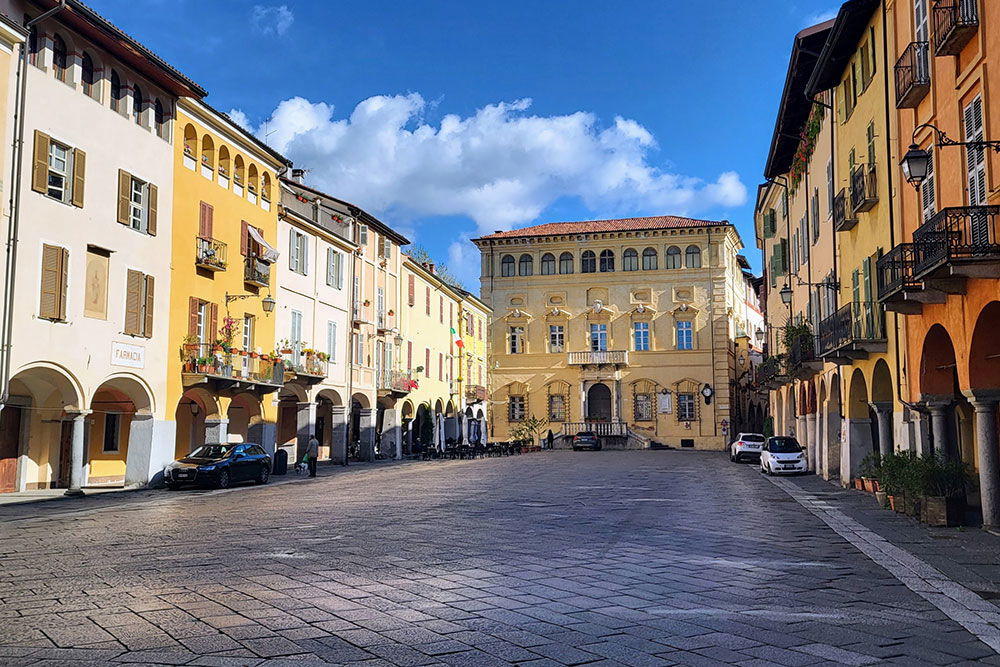
Nestled in the foothills of the Italian Alps, between Turin and Milan, lies Biella, a small city with a rich past, a world-famous wool industry, and some of the most breathtaking natural and spiritual landscapes in northern Italy. Despite being relatively unknown to international tourists, Biella offers a unique blend of artistic heritage, alpine charm, religious pilgrimage, and industrial innovation.
The origins of Biella date back to prehistoric times, with archaeological finds indicating settlements in the Bronze and Iron Ages. The city flourished under the Romans and later became part of the medieval Bishopric of Vercelli. In the Middle Ages, Biella developed as a textile hub, using the clean waters of the surrounding rivers to power its mills and wash its wool, a practice that would later earn it global recognition.
Today, Biella’s dual nature, historic and industrial, sacred and secular, is still visible in its cityscape and culture.
Biella is uniquely divided into two parts:
Biella Piazzo, the medieval upper town, perched on a hilltop
Biella Piano, the modern lower city, with elegant boulevards and shops
The two are connected by a 19th-century funicular, a short but scenic ride offering lovely views of the city below.
In Biella Piazzo, cobblestone streets wind past palaces, arcades, and historic houses. Don’t miss Palazzo La Marmora, a noble residence with gardens and period rooms, and Palazzo Gromo Losa, which hosts contemporary art exhibitions in its beautiful cloisters.
Down in Biella Piano, explore Via Italia, lined with boutiques, cafes, and Liberty-style architecture. The Duomo of Biella and the nearby Baptistery of San Giovanni Battista, with its Romanesque frescoes, form the spiritual heart of the lower city.
Biella has been called the Manchester of Italy thanks to its long-standing textile industry. Its fame in fine wool production goes back centuries, with companies like Ermenegildo Zegna, Loro Piana, and Vitale Barberis Canonico, still producing luxury fabrics worn by royals and celebrities, originating here.
You can learn more about this legacy at the Fondazione Pistoletto’s Cittadellarte, located in a former textile mill. This dynamic space combines contemporary art, sustainable design, and cultural projects, embodying Biella’s tradition of blending craftsmanship with innovation.
Biella's wool history has even earned it recognition as a UNESCO Creative City in the field of Crafts and Folk Art.
Just a few kilometers from the city center lies one of Italy’s most stunning religious and natural destinations: the Sacred Mount of Oropa (Sacro Monte di Oropa).
Set in a lush alpine amphitheater, this complex consists of:
The Sanctuary of Oropa, home to the Black Madonna of Oropa, a wooden statue believed to be of 4th-century origin
A UNESCO-listed Sacro Monte, part of the series of Sacred Mountains of Piedmont and Lombardy, with 12 chapels depicting the Virgin Mary’s life
Access to hiking trails, alpine meadows, and Monte Mucrone for panoramic views of the Po Valley
Oropa is a major pilgrimage site and also a peaceful retreat for those seeking reflection, fresh mountain air, and natural beauty.
For outdoor enthusiasts, Biella is a dream. The area offers a wide range of alpine activities, from hiking and trekking to mountain biking and skiing in winter.
The Alta Valsessera, Baraggia Natural Reserve, and the Oasi Zegna, an open-air park created by the Zegna family in the Biellese Alps, are just a few of the natural wonders nearby. Here, you’ll find trails winding through beech and pine forests, blooming rhododendrons in spring, and golden larches in autumn.
The Oasi Zegna is particularly famous for the Panoramica Zegna, a scenic road with sweeping views and access to outdoor adventures, picnicking spots, and artisan shops.
Biella’s calendar is rich with events rooted in its heritage:
Fiera di San Bartolomeo (August): A historic livestock and agricultural fair
Transumata in Camandona: Celebrates the seasonal migration of sheep and cattle
Selvatica – Art and Nature in Festival: An annual event combining exhibitions, nature walks, and educational talks
Traditional dishes to try include polenta concia (polenta with cheese and butter), salam d’la doja (cured sausage stored in lard), and local cheeses like Toma Biellese.
Don’t leave without sampling Canestrelli di Biella, delicate cookies made with hazelnuts and cocoa, often paired with a glass of Nebbiolo or Lessona wine, grown in the surrounding hills.
Biella is just over an hour’s drive from Turin, and accessible by train or car from Milan. The best times to visit are May to October, when the weather is ideal for hiking and festivals, or December, when the nearby mountains are snow-capped and magical.
Biella is a city that feels real, unspoiled by mass tourism, deeply connected to the land and its people. It’s a place where you can walk medieval streets in the morning, hike an alpine trail by afternoon, and dine on traditional cuisine in the evening.
Whether you're drawn by sacred art, natural beauty, or the allure of high-quality Italian textiles, Biella offers a rich, rewarding experience with a strong sense of identity.
So if you're seeking the soul of Piedmont, away from the obvious and into the authentic, Biella is waiting to be discovered.

More Details



